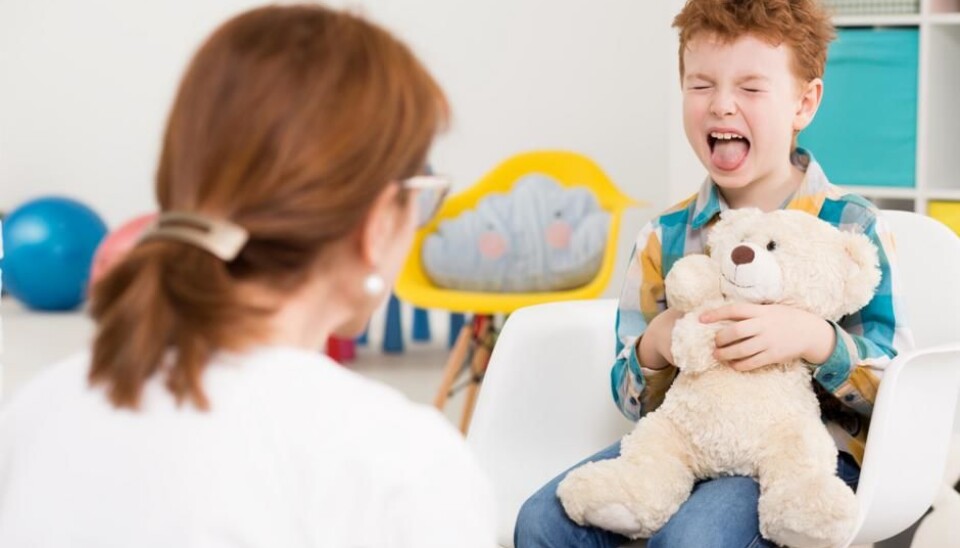
Autism can be revealed by your voice patterns
New technology that analyses your vocal characteristics might improve diagnoses of Autism Spectrum Disorder, shows new research.
A wide range of indicators are typically used to diagnose autism in children. The most common are lack of social skills, poor communication skills, and stereotypical behavioural traits.
Indeed, the diagnosis is often based on observations of children’s behaviour, as there are no unique biological indicators and all diagnoses are dependent on psychiatric assessment.
In recent years, scientists have sought out more objective methods to help clinicians with their diagnoses.
One such attempt is a new technology that analyses the nuances in peoples’ voices, based on characteristics such as tone, pauses, press, and intonation, through a process known as ‘machine learning method.’
“It’s possible to separate people with Autism Spectrum Disorder (ASD) from neurotypical people using machine learning methods, with 70 to 96 per cent accuracy” says lead-author Riccardo Fusaroli, an associate professor in Cognitive Science at the Interacting Minds Center and at the School of Communication and Culture, Aarhus University, Denmark.
“It shows that voice and prosody are potentially rich indicators of cognitive and clinical features, and thus could support clinicians in the screening and diagnostic process,” he says.
The research is not yet certain
The voice is not listed as an official indicator of ASD by the World Health Organisation, but many studies have found associations between ASD and atypical vocal traits.
For example, many people with ASD have an atypically high, monotone vocal pitch. But so far there has been no precise method that could be used to identify this with ASD.
“Even though there’s potential in machine learning technology, we can’t yet say anything conclusive about the value of it, because the research is very fragmented. Often, the number of trial participants are low and the methods and the technology are totally different, so it’s impossible to assess whether the results can be generalised,” says Fusaroli.
Read More: App calms ADHD children before bedtime
Need for more open methods
Fusaroli urges for a more open and collective approach to research into ASD voice patterns.
“Voice technology can be a reliable and objective method to support the screening and assessment of ASD,” he says.
Fusaroli hopes that the technology could also help understand social impairment in people with autism and eventually to improve their communication skills.
“The way we use our voice and the prosodic patterns in our speech are important for our social interactions, and this is often impaired in people with ASD,” says Fusaroli.
“If a child's speech is monotone, her voice too loud or hard to hear, her prosody special or different, the child might get socially isolated, which makes it even more difficult to develop communication skills. But if we understand exactly what is different and its consequences, we could perhaps help people with ASD,” he says, mentioning a recent project where people with ASD received real-time feedback through Google Glass Wearable Assistive Technology.
Read More: Poor sleep may lead to ADHD symptoms in children
Colleague: no need to research vocal characteristics
Not all of his colleagues agree that more resources should be spent on researching vocal characteristics.
Kristine Jensen de López, a professor in developmental psychology at the Center for Developmental & Applied Psychological Science at Aalborg University, Denmark, is one such sceptic.
“I’m critical of the suggestion that we should continue research into vocal characteristics as an indicator of ASD,” says de López.
“It’s a much more complicated disorder that takes many forms and can affect people in many different ways. I have difficulties imagining that the voice could be an indicator,” she says.
“I don’t think we need this type of new technology to assist [diagnoses],” says de López.
Other early indicators, such as the inability to gesticulate and develop speech and language are better indicators, she says.
The dominant problem is that people who suffer from ASD struggle to communicate, and the voice itself is a very small component of that, says de López.
Read More: MMR vaccine: Science exposes the biggest myths
The technology has potential
Jesper Dammeyer from the Department of Psychology at the University of Copenhagen, Denmark, is more optimistic.
“It looks promising and I think there’s reason to study the technology further to find its potential,” says Dammeyer who also studies language and behavioural development of autistic sufferers.
He emphasises that the method could never be used to diagnose all autistic children.
“Out of the collected group of people with ASD, 20 to 30 per cent don’t have any real language. So we couldn’t use the technology on them,” he says.
“At the moment, it can be difficult to diagnose children and sometimes you have to go through a very long and thorough investigation. If we can find some more secure indicators that can supplement the tools that we already use in our diagnoses today, then it could be good to investigate further,” he says.
“But I agree with the lead-author of the study that a lot of work lies ahead. We need more and bigger studies, before I can judge the usefulness of it,” says Dammeyer.
-------------
Read the Danish version of this article on Videnskab.dk
Translated by: Catherine Jex











